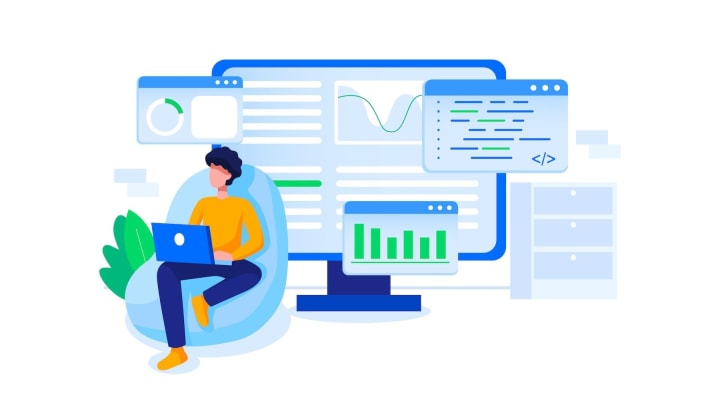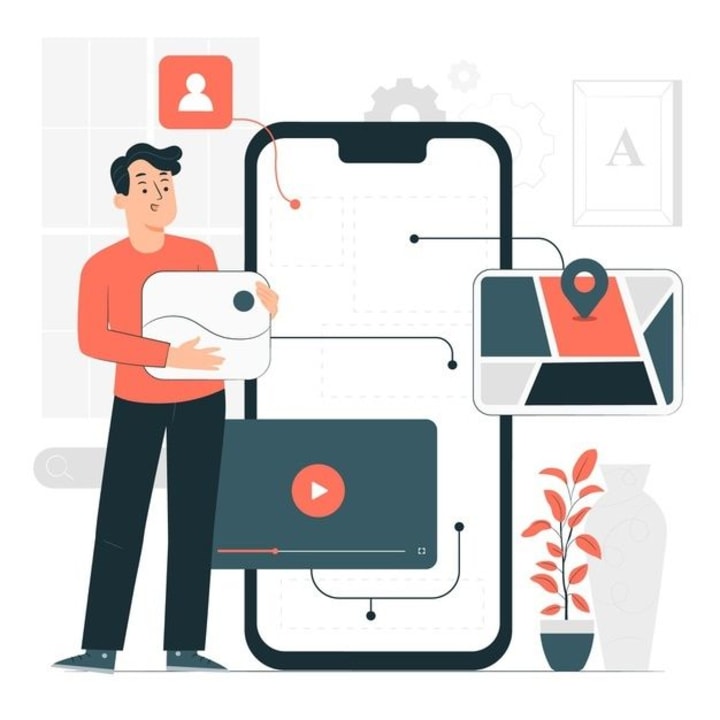The Future of Software Development: Top Trends to Watch!
From Cybersecurity to Low-Code Platforms: The Key Trends Shaping the Industry

The future of software development looks bright, with many exciting developments on the horizon. Here are a few trends that are likely to shape the industry in the coming years
1. Increased focus on security: As the number and sophistication of cyber threats continue to grow, software developers will need to prioritize security in their design and development processes.

The increased focus on security in the future of software development is driven by the growing number and sophistication of cyber threats. Here are a few examples and interesting facts about this trend.
Imagine a developer is building a new online shopping platform. In the past, they may have focused primarily on features like user-friendliness and performance, with security being an afterthought. In the future, however, they will need to prioritize security from the very beginning, designing the platform to protect against threats like data breaches, malware, and ransomware.
Fact#1: Cyber attacks are becoming more common and more costly. According to one study, the average cost of a data breach is now over $3.9 million. This is a major concern for businesses and organizations, which is why they are increasingly demanding secure software from developers.
Fact#2: The demand for cybersecurity professionals is also on the rise. According to one report, the global cybersecurity workforce will need to grow by 145% to meet the increasing demand for secure software. This presents a major opportunity for developers with expertise in this area.
Overall, the increased focus on security in the future of software development is driven by the growing number and sophistication of cyber threats, as well as the increasing demand for secure software from businesses and organizations.
2. Continued adoption of cloud computing: Cloud computing allows developers to build, test, and deploy applications more quickly and easily, and this trend is expected to continue in the future.

The continued adoption of cloud computing is expected to shape the future of software development in a number of ways. Here are a few examples and interesting facts about this trend:
Imagine a developer is building a new application that needs to process a large amount of data. In the past, they may have had to invest in expensive hardware and infrastructure to handle this task. In the future, however, they can use cloud computing services to quickly and easily scale their application to meet the demand.
Fact#1: Cloud computing allows developers to build, test, and deploy applications more quickly and easily. This is because they don't have to worry about procuring and maintaining hardware and infrastructure, and can instead focus on writing code.
Fact#2: The global cloud computing market is expected to grow significantly in the coming years. According to one report, the market is expected to reach $623.3 billion by 2023, up from $411.4 billion in 2018.
Overall, the continued adoption of cloud computing is expected to shape the future of software development by allowing developers to build, test, and deploy applications more quickly and easily, and by driving significant growth in the cloud computing market.
3. Rise of low-code and no-code platforms: These platforms allow non-technical users to build their own applications, freeing up developers to focus on more complex tasks.

The rise of low-code and no-code platforms is expected to shape the future of software development by making it easier for non-technical users to build their own applications. Here are a few examples and interesting facts about this trend:
Imagine a business owner who has a great idea for a new application, but doesn't have the technical skills to build it themselves. In the past, they may have had to hire a team of developers or learn to code themselves. In the future, however, they can use a low-code or no-code platform to build the application themselves, without needing to write any code.
Fact#1: Low-code and no-code platforms are becoming increasingly popular. According to one report, the low-code development platform market is expected to reach $45.09 billion by 2024, up from $10.19 billion in 2019.
Fact#2: These platforms are not just for non-technical users. Developers can also use them to quickly prototype and test new ideas, freeing them up to focus on more complex tasks.
Overall, the rise of low-code and no-code platforms is expected to shape the future of software development by making it easier for non-technical users to build their own applications, and by driving significant growth in the low-code development platform market.
4. Greater use of artificial intelligence and machine learning: Developers will increasingly use AI and machine learning to build intelligent applications that can learn and adapt over time.

The greater use of artificial intelligence (AI) and machine learning in the future of software development is expected to result in the creation of more intelligent and adaptive applications. Here are a few examples and interesting facts about this trend:
Imagine a developer is building a customer service chatbot for a company. In the past, the chatbot may have been able to handle a limited number of predetermined questions and responses. In the future, however, the chatbot could use AI and machine learning to understand and respond to a wider range of customer inquiries in a more natural and human-like way.
Fact#1: The use of AI and machine learning in software development is expected to grow significantly in the coming years. According to one report, the global AI market is expected to reach $190.61 billion by 2025, up from $21.46 billion in 2018.
Fact#2: AI and machine learning can be used to improve a wide range of applications, including chatbots, personal assistants, recommendation engines, and more.
Overall, the greater use of artificial intelligence (AI) and machine learning in the future of software development is expected to result in the creation of more intelligent and adaptive applications, and to drive significant growth in the AI market.
5. Increased use of open source technologies: Open source technologies, which can be freely used, modified, and distributed by anyone, will likely play an even bigger role in the future of software development.

The increased use of open source technologies is expected to shape the future of software development by making it easier for developers to collaborate and share their work. Here are a few examples and interesting facts about this trend:
Imagine a developer is working on a new application and wants to use a certain library or tool that has already been created by someone else. In the past, they may have had to recreate this library or tool themselves, which can be time-consuming and tedious. In the future, however, they can simply use an open source version, which can be freely used, modified, and distributed by anyone.
Fact#1: Open source technologies are becoming increasingly popular among developers. According to one report, the use of open source software has increased by more than 50% in the past decade.
Fact#2: The use of open source technologies can benefit both individual developers and organizations. For developers, it can save time and effort, and allow them to focus on more complex tasks. For organizations, it can reduce costs and increase efficiency.
Overall, the increased use of open source technologies is expected to shape the future of software development by making it easier for developers to collaborate and share their work, and by driving the widespread adoption of open source software.
6. Growing demand for mobile and web development skills: As more and more businesses and organizations shift to online platforms, there will be a increasing demand for developers with expertise in mobile and web development.

The growing demand for mobile and web development skills is expected to shape the future of software development by creating new job opportunities for developers with these skills. Here are a few examples and interesting facts about this trend:
Imagine a developer with expertise in mobile app development. In the past, they may have had a limited number of job opportunities available to them. In the future, however, the growing demand for mobile apps is expected to create new job opportunities for developers with these skills.
Fact#1: The demand for mobile and web development skills is on the rise. According to one report, the demand for mobile app developers is expected to increase by 31% between 2016 and 2026. Similarly, the demand for web developers is expected to increase by 13% over the same period.
Fact#2: The demand for mobile and web development skills is being driven by the increasing number of businesses and organizations shifting to online platforms. This trend is expected to continue in the future as more and more industries move online.
Overall, the growing demand for mobile and web development skills is expected to shape the future of software development by creating new job opportunities for developers with these skills, and by driving the increasing shift of businesses and organizations to online platforms.
Conclusion: Overall, the future of software development looks exciting and full of opportunities for those with the right skills and expertise.

About the Creator
Balaji Devadoss
Welcome, I'm an inquisitive mind exploring different subjects and bringing them to you in an engaging way. Please Like and subscribe for valuable insights and perspectives, it will help and motivate me to continue.
Enjoyed the story? Support the Creator.
Subscribe for free to receive all their stories in your feed. You could also pledge your support or give them a one-off tip, letting them know you appreciate their work.






Comments
There are no comments for this story
Be the first to respond and start the conversation.